20 Watts and a Wire in Hawaii
For the past two weeks I’ve been on the Big Island in Hawaii (aka Hawai’i island) for work. I didn’t have a ton of time off (it’s generally been my experience that when your company flies you halfway around the world for a work trip, you end up working a lot), but I did get a couple of days to myself and with those I attempted to play a little radio. I attempted to set up a POTA activation four times while I was on the island. Of those four times, only the last attempt was successful. It’s quite a story.
I was quite excited when the possibility of a work trip to the Big Island came up for a number of reasons (obviously), but one thing that excited me was that there was a lot of unactivated and never attempted parks on the island. It appears that there is not a massive amateur radio presence in Hawaii, or at least there isn’t on that island, and the island itself is huge and boasts a number of parks. So I thought it may be a good opportunity to do a first activation of a park. When I say the island is huge, I mean it is huge. It is difficult to fully understand how big it is before you get there. I have been to a couple of islands in my life and actually lived on Guam for a little bit, but by comparison the Big Island hardly even seems like an island. It takes a little over two hours to drive across the island widthwise and the trip is over 100 miles. Also there are a number of volcanoes in the center of the island with incredible elevations, so a trip across the center of the island may find you starting at sea level, driving up to about 6000 ft elevation, and then driving back down to sea level. Quite increcible!
That said, not fully understanding the scope of the islands size may have led to me overextending myself when I first arrived. Upon arrival I found that I had a day almost to myself since we had arrived a day earlier then expected. I was itching to try for a park and I settled upon attempting to activate K-6406 (Mackenzie State Recreation Area). This park had been attempted twice in the past but it seemed that people had only ever made one or two SSB QSOs. I had the power of CW and 20 watts on my side! Even better, after consulting some government maps of the state owned areas in that region I discovered that the park overlapped with K-7696 (Malama-ki Forest Reserve), and it wouldn’t be hard to set up for a two-fer. As great as this sounds, I was staying in Waikoloa Village on the west side of the island and these parks were on the far east side. I started in that direction with my gear in hand and made it to the site by around 1330 local time.
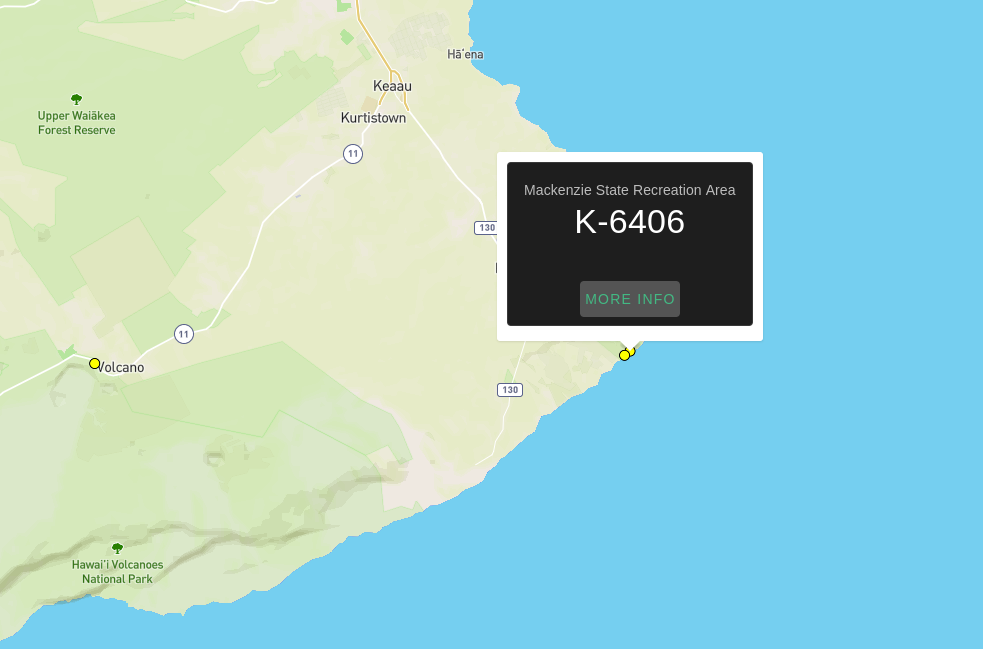
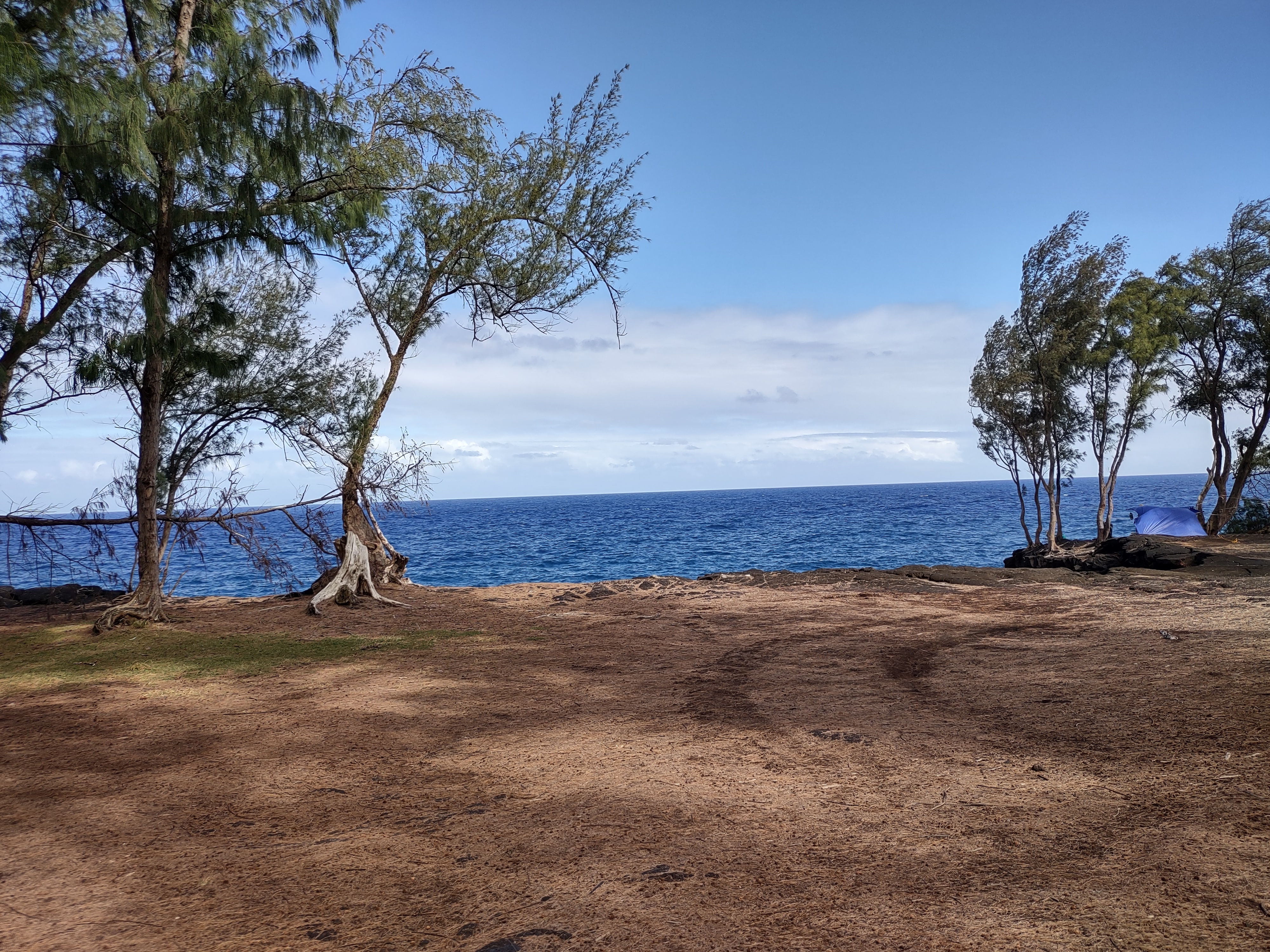
One disheartening discovery when I got to the park, I was about 25 minutes away from cell service. I had scheduled my activation but I would not be able to see if I had any RBN hits, and would be totally reliant on both getting an RBN hit and the RBN -> POTA reporter working to get a spot. You really must have a spot when operating POTA as an activator, even when operating from the US mainland. You’re usually operating QRP or near about QRP, and you are simply lost in the noise without it. I set up my 20 meter EFHW antenna broadside to the east of the island towards the US, checked that I was tuned properly, and started calling CQ. Long story short, I didn’t get 10 QSOs. I was able to get three QSO together after calling CQ for about 45 minutes, and feeling that that tactic wasn’t working I started to “hunt and pounce” to scrape together another three. I did have a nice ragchew QSO with KE7VE who was looking for SKCC and exchanged SKCC numbers with him (since the only key I had was my paddles, I switched the G90 into manual key mode and used one of the two paddles to manually generate the code, so hopefully that’s okay by the SKCC rules hihi). Also, I had a nice SSB QSO with ZL3TT in New Zealand! He even gave me a 53 RST once he turned his beam towards me, which was a great report to hear from my meager 20 watts and EFHW! However six QSOs is not ten, and it was not a successful activation. It was also my first day on the island, I was at least half an hour from cell phone service, and I wasn’t totally sure how to get back to my hotel. I didn’t want to be driving around to find cell phone service at night, so I decided to pack it up and head back.
There will be a bit of a theme throughout this post and it is really the moral of the story so I’ll state it clearly here. It is REALLY hard to make QSOs (especially ten QSOs) with a compromise EFHW antenna and 20 watts when every single QSO has to cross half of the Pacific Ocean, and where the closest anyone will be is around 2500 miles from you. I was very lucky to have CW on my side as I’m positive that I wouldn’t have been able to do it with SSB.
So the first day was a wash, but I did have the afternoon off on the second day of my trip so I figured I’d pick somewhere closer and hopefully find a park with at least some cell phone service. I found the park K-6420 (inaccurately called Kilolo Reserve State Reserve on the POTA site, the actual name of the park is Kiholo State Park Reserve) which was about 20 minutes from my hotel. It’s on the west side of the island facing towards Australia, but I figured I’d check it out. I made it down to the beach and set up my gear. I was a little frustrated with radio after not completing the activation from the previous day and my heart wasn’t totally in it that day, but I did get the antenna set up and let out a couple of CQs. I had very spotty cell reception in that area but was able to see that I wasn’t getting anything on RBN at all. My heart wasn’t in it so I packed up my gear and headed out to do other things.
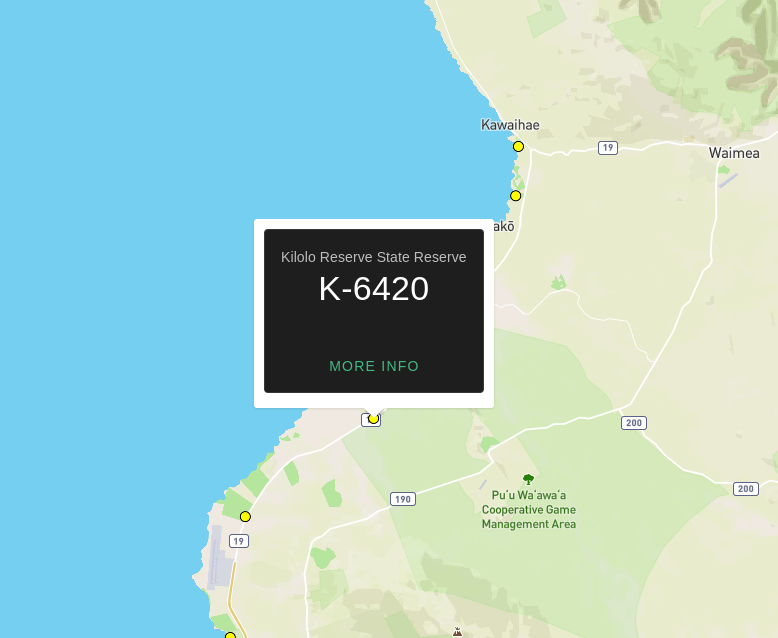
I wasn’t able to operate at all for about a week and a half after that due to work. However, I unexpectedly found myself with two days at the end of the trip to myself. I immediatelly planned on activating the Mackenzie State Recreation Area two-fer again, now with more knowledge of the island. I planned my activation on the POTA website, packed up my gear, woke up early that morning, and headed out. Upon setting up my antenna and gear though I had a strange discovery. This EFHW is “supposed” to work for 10, 20, and 40 meters, however in practice I have found that 20 is where it shines. I have never seen it have an SWR above around 1.5:1 anywhere inside the CW portion of 20 meters, no matter how I orient it. But upon checking the SWR when I set up that day, I was seeing 4:1 across the band! I took the antenna down and fiddled with it a little, and the SWR dropped and signals started coming in. I’m really not sure what happened here, but you’ll see that it had me pretty worried. With the SWR back to normal I jumped on the air and started calling CQ for around an hour and a half. And I got nothing. No response from anyone, nothing at all. I began to get a little concerned, especially remembering the high SWR episode, so I decided that the thing to do was pack up my gear, drive to cell phone service, and see if my hour and a half of CQs had gotten any kind of RBN hit.
Once I got to cell service I checked RBN and found that I hadn’t had a single hit at all. Not even a 3db hit. This caused me great concern. Surely, I thought, I should have had something, even if I was basically in the noise floor. Coupled with seeing the 4:1 SWR, I became convinced that I had somehow burned the finals on my G90. Maybe, I thought, there’s some intermittent problem with this antenna, and maybe it somehow happened mid CQ after I had already checked everything. And here I was in Hawaii, thousands of miles from my shack, with no test gear whatsoever to test the rig and see. Along with all these concerns and frustrations I had some pressing phone calls from home that demanded my attention and I didn’t feel like going back to an area with no cell service for awhile, so I drove the two hours back to my hotel and called it a day for radio.
That was going to be the end of my radio adventure for the trip. I figured I may be able to go buy some allen wrenches and a multimeter to check for a short across the power MOSFETs, but even if I found a short that would just confirm the damage and there wouldn’t be anything I could do about it. I had one more day to myself on the island, and I spent the morning of it running some errands and buying souveneirs for my family.
However, my mind kept drifting back to radio. I really wanted to get on the air. I had my gear with me and I figured that if the rig was damaged, I probably wasn’t going to break it any more then it was. But I didn’t actually know that it was broken, since I was trying to operate from Hawaii, and like I said earlier it is REALLY hard to operate from Hawaii with an EFHW and 20 watts. I suddenly had an idea of an experiment I could run to test the rig with just the gear I had. I discovered that there was a WebSDR station on Maui that covered the 20 meter band. Maui is the next island over from the Big Island and while it is over the horizon, if you drive up one of the volcanoes you can just barely see it. So it’s close. My thought was, if I set up on the west side of the island facing Maui, and if I can have cell service while I’m operating, if the rig was okay then I should be able to reliably hit Maui with 20 meters via ground wave propogation. I’d have to set up on the beach to prevent obstructions (ground wave isn’t that good at that distance), but I should at least be able to reliably hear something. I returned to K-6420, the park near my hotel, and set up my rig on the beach.
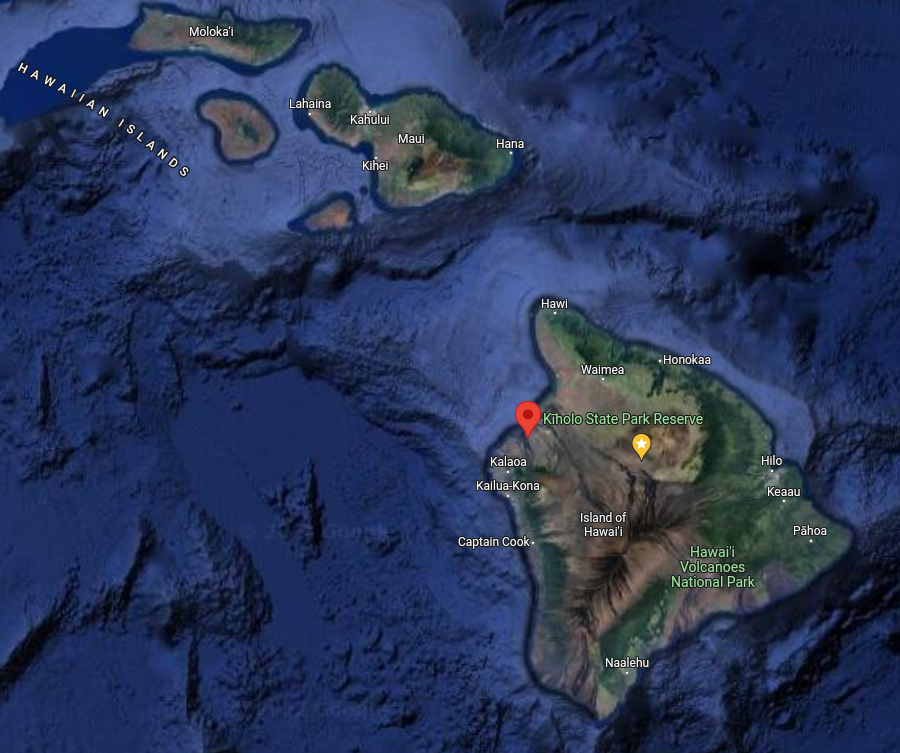
I barely had cell service inside the park, so I found that the best approach to test was to walk out onto the beach where the service was good, load up WebSDR on my phone, tune to the right frequency, leave my phone on a rock, connect a set of bluetooth headphones that I had to my phone, and then retreat back to my rig and attempt to call. I called QRL a couple of times and I could hear myself! It was a little faint since Maui was closer to the axis of the antenna and that is quite a distance for ground wave, but I could hear! I figured that there was NO way that I would be able to hear anything at all if the finals were bad, I had to be getting out! The rig was okay and the problems were all in my head!
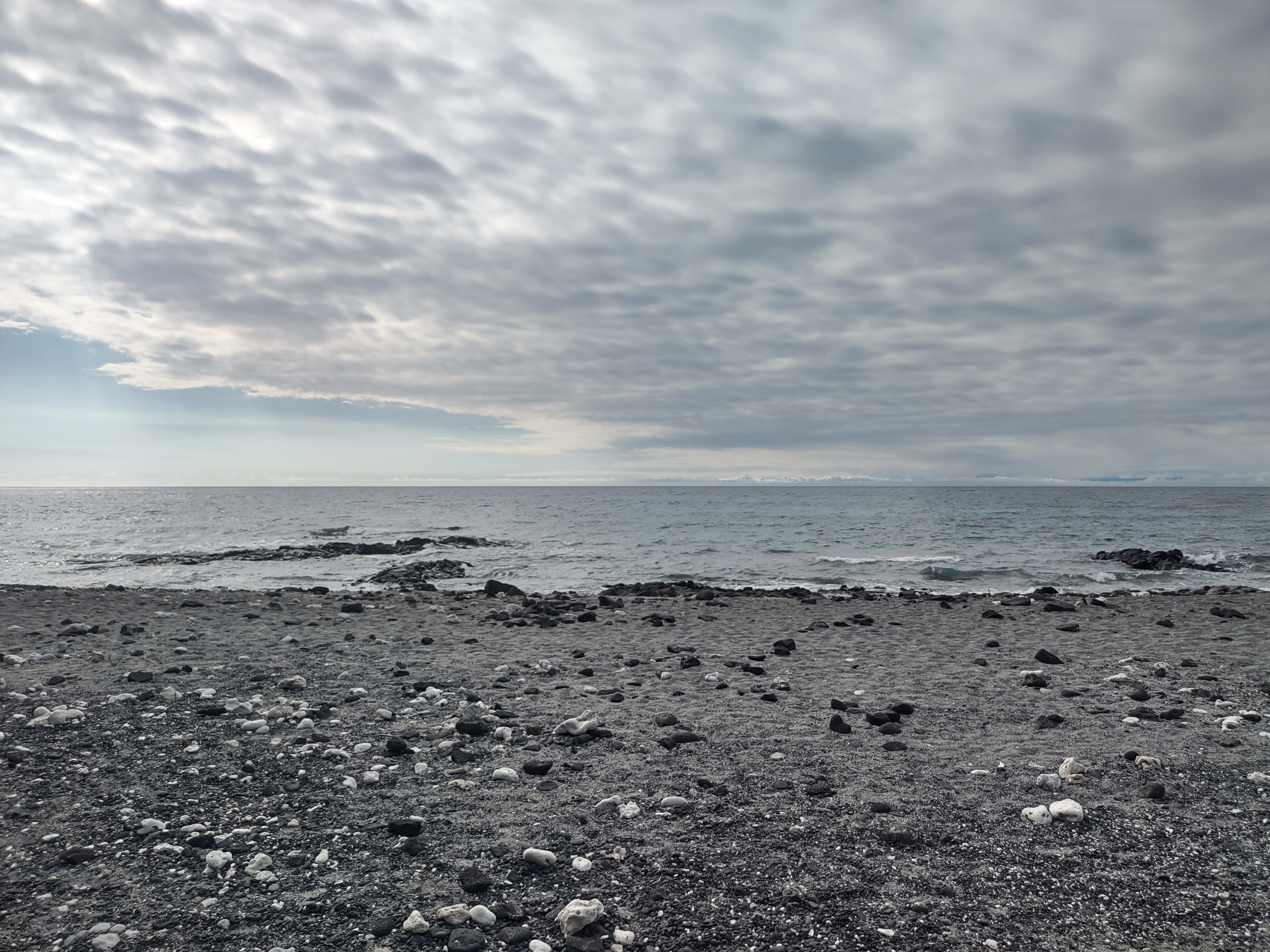
And then I found myself with a radio that I had renewed confidence in, inside a state park, with cell phone service, and with an already set up antenna! Lets operate! I spotted myself in the park since I had the service and set about calling CQ. I still didn’t have much confidence in the whole setup since this was an altogether compromised position and I was facing west, away from the US, with a 7000 foot tall volcano behind me that I figured was surely affecting my eastward propogation, but hey why not. I still wasn’t getting any spots but before too long I had a QSO from an Arizona station. Incredible and exciting, but surely a fluke right? I kept calling for another 20 minutes, and then all of a sudden the band opened up. I started getting RBN hits all over the US with 15db signal reports, and I had six more QSOs. Seven was a pretty exciting number, and now I was thinking it may be possible. I tried for another 30 minutes and then I finally had my ten! In all it took around an hour and 45 minutes to get 10 QSOs and I was running my battery to the dregs, but I was able to get them! Amongst those QSOs were Tennessee and Florida! Not DX from my usual QTH, but that’s well over 4000 miles short path when you’re in Hawaii! And to top it all I had a park to park QSO with AC3H who was in K-3216 (Lake Sammamish State Park) in Washington State! Park to park operation with the US mainland while sitting on a beach in Hawaii! Incredible!
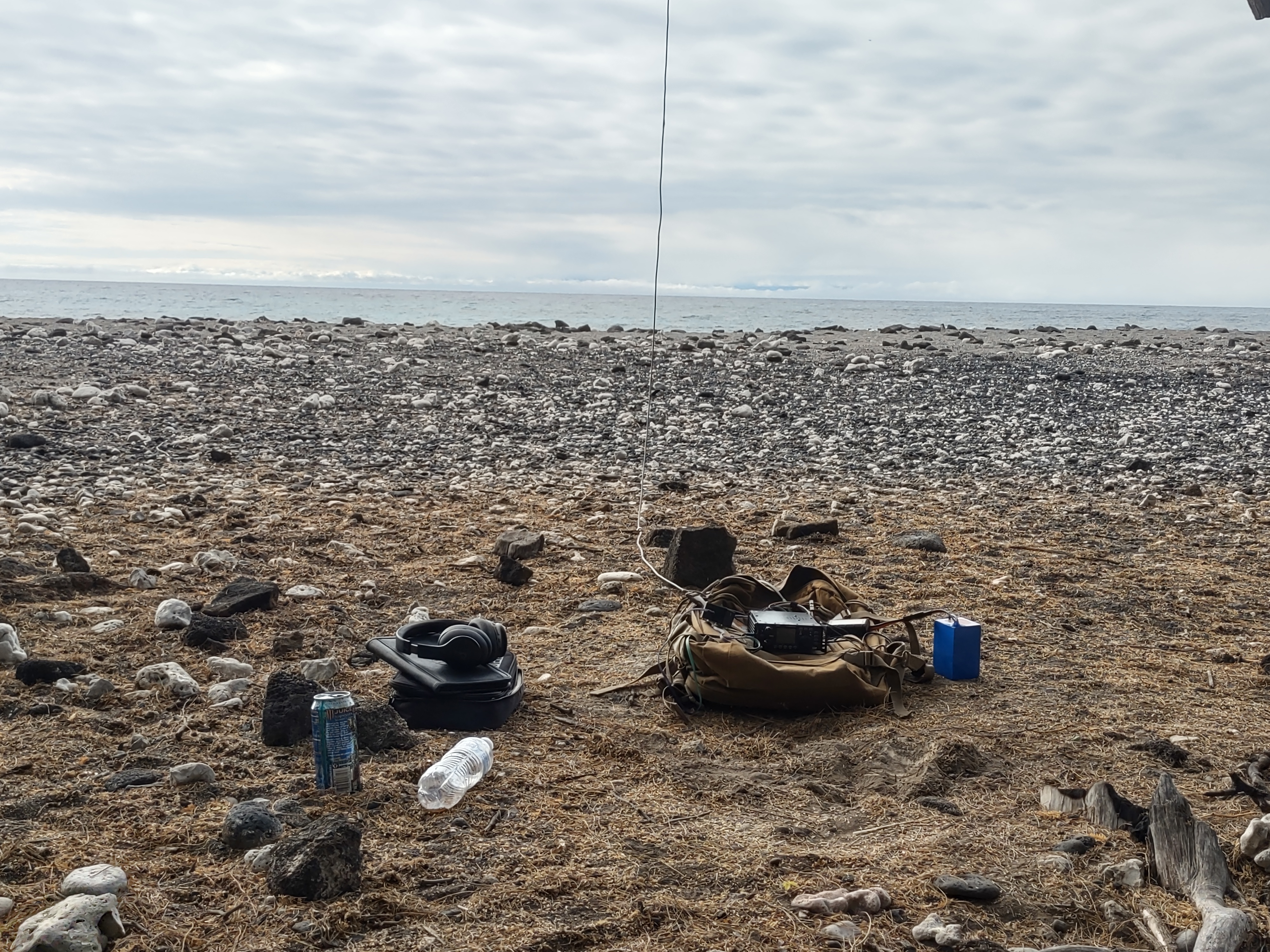
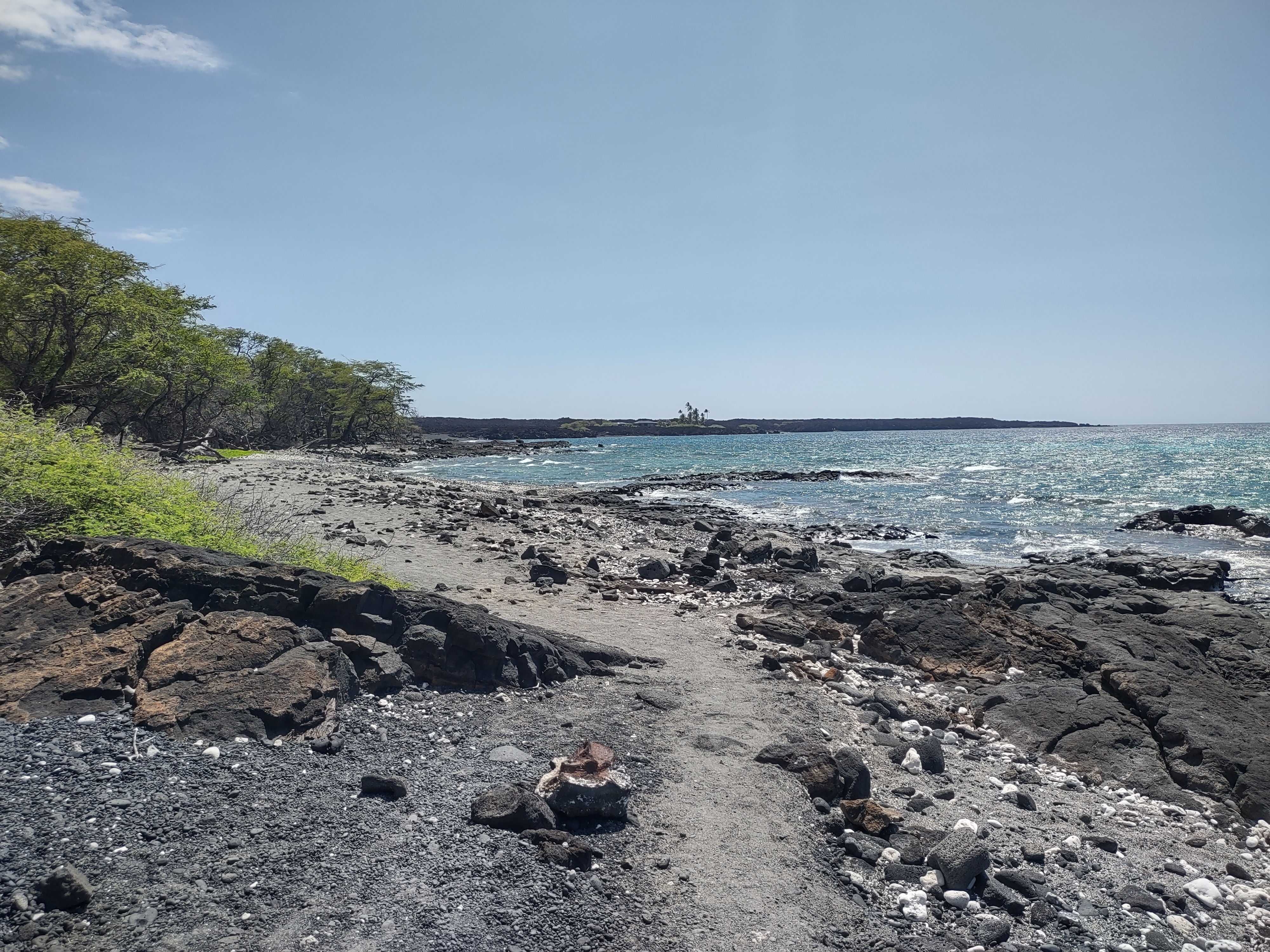
This is about as long and rambly as a post can be, but I really wanted to document the whole experience of the time operating on Hawaii, not just the final successful activation. If there are any morales to this story, I think they are:
- Always test your antenna after putting it up, especially if you are running wire antennas into trees in various orientations like I have been doing.
- Trust your equipment, and take care of your equipment.
- It is REALLY hard to activate a park with a compromise EFHW antenna run into trees when you’re in Hawaii!
If anyone reads through this whole post, I appreciate it. The whole experience was quite an adventure, and hopefully you can take something from it.
My gear list for the activation was: